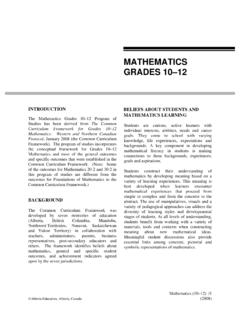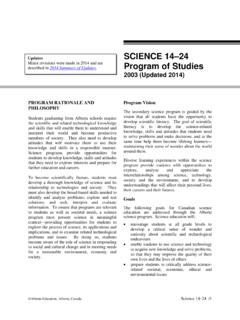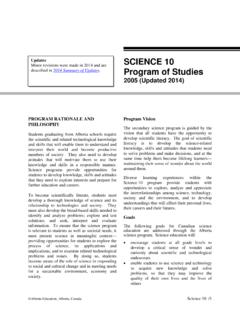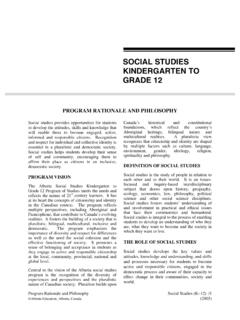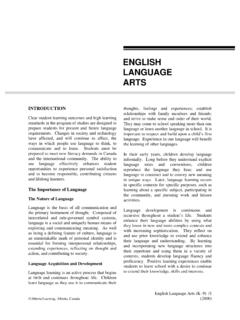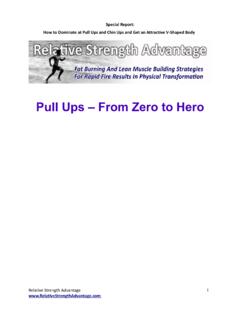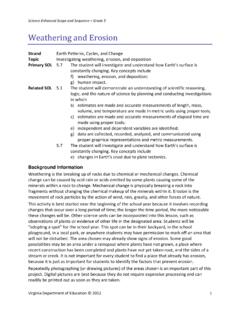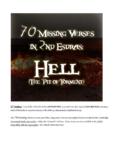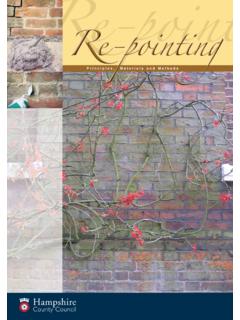Transcription of Our Words, Our Ways - Alberta Education
1 our words , our ways : Teaching First Nations, M tis and Inuit Learners Alberta . Alberta Education . Aboriginal Services Branch and Learning and Teaching Resources Branch. our words , our ways : teaching First Nations, M tis and Inuit learners. ISBN 978-1-4601-3475-7 For further information, contact: First Nations, M tis and Inuit Education Division 10044 108 Street NW Edmonton, Alberta T5J 5E6 Telephone: 780 415 9300 in Edmonton or toll-free in Alberta by dialing 310 0000 The primary intended audience for this resource is: Teachers Administrators School Staff Counsellors Liaison Workers Students Parents General Public Copyright 2005, the Crown in Right of Alberta , as represented by the Minister of Education . Every effort has been made to provide proper acknowledgement of original sources.
2 If cases are identified where this has not been done, please notify Alberta Education so appropriate corrective action can be taken. Permission is given by the copyright owner to reproduce this document, or any part thereof, for educational purposes and on a nonprofit basis, with the exception of materials cited for which Alberta Education does not own copyright. A PDF version of this resource is available on the Alberta Education Web site at This resource is also available through the Open Government Portal at Alberta Education , Alberta , CanadaOUR words , our ways i Table of Contents Welcome .. v Chapter 1 Worldviews and Aboriginal Cultures: Where hearts are rooted .. 1 Chapter 2 Aboriginal Students: Who are they? How do they learn?.. 29 Chapter 3 The Classroom: A community of learners .. 41 Chapter 4 School, Family and Community: Sharing the responsibility.
3 61 Chapter 5 Learning Strategies for Aboriginal Students: Opportunities to make learning meaningful .. 79 Chapter 6 Assessment: Authentic reflections of important learnings .. 111 Chapter 7 Teaching Aboriginal Students with Learning Disabilities: Recognizing gifts and strengths .. 123 Glossary of Terms .. 151 Appendices .. 157 Area Map of Alberta .. 158 Nations and First Nations Communities in Alberta .. 159 tis Settlements and Regional Zones in Alberta .. 161 Nations and M tis Language Groups in Alberta .. 162 for Talking Circles .. 163 Resources About Aboriginal Peoples .. 164 Parents Offer Advice to Other Parents .. 167 Organizations and Agencies .. 168 Table of Contents our words , our ways Alberta Education , Alberta , Canada ii .. 171 .. 172 Diagram .. 173 12 P M I Chart .. 174 175 W L 176.
4 177 Interview .. 178 Study Planner .. 179 a Service Learning Project .. 180 It Happen .. 181 on Our Service Learning .. 182 Template .. 183 Rights and Opportunities to Participate inEducational Decision Making .. 184 Checklist .. 185 Tree .. 186 on Decision Making .. 187 Bibliography .. 189 Index .. 195 Alberta Education , Alberta , Canada our words , our ways iii Acknowledgements Aye-aye, ki na n sko mi tin n waw, nii tsii ksik ksii ma tsi tsiip, mahsi, marci, merci, thank you to the community Elders, teachers, parents, guardians, and other individuals and groups who contributed to the development of this resource, including the following. Elders who shared their wisdom in the development and review of this resource Agnes Abraham George Bretton Joe P. Cardinal Christine Daniels Peter O Chiese Homer Poitras Liz Poitras Gatherers and sharers of information from Edmonton Catholic Schools Aboriginal Learning Centre Louise Breland, Carola Cunningham, Ken Ealey, Toni Kalita, Shirley Mykituk, Bev Ross, Bob Steele Principal writer Marnie Robb Contributing writer Crystal M.
5 John Index Judy Dunlop Information Services Cover design concept Warren Starr-Yellowknee ( ) We would like to acknowledge the wisdom and foresight of our ancestors who signed Treaties 4, 6, 7, 8 and 10 so future generations would have an Education , and participate in and contribute to Canadian society as First Nations, M tis and Inuit people. We dedicate this resource to them. Tracey Poitras-Collins, Project Manager of our words , our ways Aboriginal Services Branch, Alberta Education Acknowledgements our words , our ways Alberta Education , Alberta , Canada iv Alberta Education Aboriginal Services Branch Evelyn Good Striker Director Tracey Poitras-Collins Project Manager Patsy Steinhauer Education Manager Learning and Teaching Resources Branch Raja Panwar Director Greg Bishop Assistant Director Catherine Walker Resource Manager Doris Gladue Resource Manager Sandra Mukai Copyright Dianne Moyer Document Production Special thanks to.
6 Special Programs Branch, Rick Hayes, Lorraine Stewart and Rebecca Pound Alberta Education , Alberta , Canada our words , our ways v Welcome This resource will help classroom teachers and staff better serve the needs of their Aboriginal students. The process of development was one of consultation, information gathering, drafting, more consultation and re-drafting. The contributors to this resource include Aboriginal Elders, teachers and psychologists as well as other members of Alberta s Aboriginal communities. Culturally-relevant approaches effectively serve the learning needs of Aboriginal students. The term Aboriginal refers to the descendants of the original inhabitants of North America. The Canadian Constitution recognizes three groups of Aboriginal peoples: First Nations, M tis and Inuit. Traditional and contemporary Aboriginal cultures offer a number of frameworks for understanding, guiding, learning from and teaching students.
7 The relationship between student and teacher is the heart of Aboriginal Education . The teacher s relationship with each student is based on observing and learning about the individual child and his or her unique learning needs in order to help the child grow holistically spiritually, physically, mentally and emotionally. Education is very important to Aboriginal people it is a key to the future for Aboriginal children and their families. This resource offers information about Aboriginal cultures and perspectives, practical ideas, and sample strategies that will help teachers meet the needs and recognize the gifts of Aboriginal students. Many of the sample strategies are good for all students and are relevant for a range of educational settings and contexts. Guiding Principles Teacher understanding of and respect for the diversities of Aboriginal cultures, languages, histories and worldviews is integral to the success of Aboriginal students.
8 Creating a classroom atmosphere that reflects and respects Aboriginal perspectives will benefit all the students in the classroom. Teacher/student relationship is the foundation of that student s success in the classroom. Welcome our words , our ways Alberta Education , Alberta , Canada vi Teacher recognition and continued assessment of the learning strengths and needs of each Aboriginal student is vital to that student s progress. Positive, collaborative relationships with the families and communities of Aboriginal students will support student success. Defining family Extended families and guardian relationships are a well-established part of Aboriginal community life. The term parent in this resource refers to the person taking the role of involved adult in a student s life. This person could be a grandparent, aunt, uncle, older sibling, cousin or other family member.
9 Adoption is also common in Aboriginal communities often in a social rather than legal sense where an individual is adopted or taken in by a family, clan or community. How this Resource is Organized The resource is organized into seven chapters. Each chapter contains information, sample strategies, shared wisdom from Aboriginal scholars and Elders, and related stories shared by Aboriginal teachers and liaisons. Worldviews and Aboriginal Cultures: Where hearts are rooted Worldviews permeate all aspects of effective Education of Aboriginal students. Worldviews are like stones thrown into the water from which other circles grow. Learning about the traditional and contemporary experiences unique to each Aboriginal student helps to develop effective approaches for supporting that student in the classroom. An understanding of Aboriginal history can help teachers contribute to the process of rebuilding healthy Aboriginal communities in which Education is built on an acceptance and respect for Aboriginal languages, cultures and worldviews.
10 Aboriginal Students: Who are they? How do they learn? All Aboriginal students are unique individuals with their own set of gifts and needs, as well as members of a family and a cultural community. A teacher s best source of information about a student s gifts and needs grows out of a collaborative relationship with the student. By observing, experiencing and reflecting in partnership with the student, a teacher can learn how to most effectively support the student s success in the classroom. Welcome Alberta Education , Alberta , Canada our words , our ways vii The Classroom: A community of learners Aboriginal student learning is enhanced by a safe, comfortable classroom environment a community of learners. Aboriginal students do their best work when they experience: a sense of belonging as respected and valued students the spirit of mastery that comes through encouragement of their gifts and competencies independence developed by opportunities to develop inner control and responsibility the spirit of generosity that reflects core values of sharing and community responsibility (Brendtro, Brokenleg and Van Bockern 1990).
